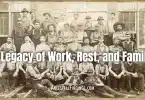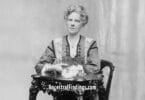The 1960s was a decade of transformation—from the Civil Rights Movement and space race to shifting social norms. However, one more subtle change sweepingly impacted American life: the rise of modern advertising. Fueled by Madison Avenue’s bold new approaches, advertising became an art form, a science, and a cultural force that shaped how Americans saw themselves, their desires, and their place in the world. Let’s take a closer look at how this revolutionary period in advertising changed American culture in lasting ways.
The Dawn of Madison Avenue’s Golden Age
By the late 1950s, television had become a fixture in American homes. Madison Avenue—the hub of New York City’s advertising industry—quickly recognized TV’s potential to reach a massive audience. Print ads had been popular for decades, but television added new dimensions: moving visuals, sound, and personalities. Advertising was no longer confined to words and images on a page; it could now create full narratives, engage emotions, and introduce products directly into viewers’ daily lives.
The creatives of Madison Avenue, often referred to as “Mad Men,” seized this new medium with enthusiasm. Inspired by the bold graphics of modern art, the catchy rhythms of jazz, and the allure of Hollywood glamour, advertisers sought to capture attention and elevate brands. Ads were becoming more than informational—they were aspirational, portraying products as items to own and as pathways to a better life.
Iconic Campaigns that Shaped the Era
The 1960s introduced a wave of advertising campaigns that have since become iconic, many defining brands and American culture. Here are a few that left a lasting impact:
• Volkswagen’s “Think Small” Campaign: Launched in 1959, Volkswagen’s “Think Small” campaign by the advertising agency Doyle Dane Bernbach broke all the rules of traditional car advertising. Instead of portraying the car as glamorous or powerful, the ads celebrated the Beetle’s simplicity, compact size, and practicality. This campaign resonated with the growing countercultural movement of the 1960s, appealing to a sense of individuality and rebellion against the “bigger is better” mentality.
• Coca-Cola’s “It’s the Real Thing”: In 1969, Coca-Cola introduced its “It’s the Real Thing” campaign, quickly becoming a cultural touchstone. The ads portrayed Coke as more than a beverage—symbolizing authenticity, friendship, and shared moments. The campaign culminated in the early 1970s with the famous “Hilltop” commercial, where people from different backgrounds sang, “I’d like to buy the world a Coke.” This ad captured the era’s idealism, connecting a simple product with universal themes of peace and harmony.
• Anacin’s “Fast, Fast, FAST Relief”: This campaign for the headache remedy Anacin was one of the earliest to utilize rapid editing and a high-energy approach. Its fast-paced style mirrored the increasingly fast-paced nature of American life, making the product seem like an essential solution for busy, stressed individuals. The style of this ad influenced countless others and marked a shift toward more intense, attention-grabbing techniques.
The Art and Psychology Behind 1960s Ads
The creatives of Madison Avenue were not just marketers—they were pioneers of a new type of psychology-driven advertising. Inspired by breakthroughs in psychology and behavioral science, advertisers began to understand the power of emotion in influencing consumer behavior. They didn’t just promote products; they sold ideas, emotions, and lifestyles.
This era saw the birth of “brand personalities”—a concept where brands were portrayed as relatable, aspirational, or possessing human qualities. Coca-Cola became the “real thing,” while Marlboro cigarettes adopted the rugged “Marlboro Man” as a symbol of masculinity and independence. Brands were becoming characters in their own right, each offering a unique story that consumers could relate to or aspire to embody.
Moreover, these advertisers perfected the art of “subliminal messaging,” suggesting ideas or desires subtly without overtly stating them. For example, an ad might depict a family enjoying a meal together, subtly suggesting that the product would enhance family togetherness or happiness. This clever and persuasive approach shaped consumers’ desires and identities.
Advertising’s Influence on Social Norms
Advertising in the 1960s didn’t just reflect society; it helped shape it. Madison Avenue tapped into the aspirations and anxieties of the American public, using ads to promote values and ideals that mirrored or even accelerated social change.
1. The Rise of Youth Culture: As Baby Boomers came of age, advertisers recognized the spending power of young people and began to target them directly. Products were positioned as symbols of rebellion, freedom, and self-expression, themes that resonated with the younger generation. Advertisements for Levi’s jeans, motorcycles, and music-related products encouraged a spirit of individuality and counterculture.
2. Shifting Gender Roles: The women’s movement gained momentum in the 1960s, and advertising gradually began to reflect this shift. While many ads of the time still portrayed women in traditional roles, some advertisers took a more progressive stance, showcasing women as independent, stylish, and empowered. Brands like Virginia Slims targeted women with the slogan “You’ve come a long way, baby,” connecting their product to the feminist movement.
3. Consumerism as Patriotism: The postwar era promoted the idea that buying American products and participating in consumer culture supported the nation. Ads often associated products with American values like freedom, ingenuity, and optimism. Advertising reinforced this connection between consumerism and patriotism, creating a powerful narrative that buying and enjoying products represented American identity.
The Legacy of 1960s Advertising in Today’s Culture
Though more than 50 years have passed, the influence of 1960s advertising is still seen today. Madison Avenue’s bold, creative campaigns set the standard for modern advertising, emphasizing the importance of storytelling, emotion, and psychology in brand messaging. Many techniques pioneered in the 1960s—like developing brand personalities, using emotional appeal, and crafting immersive brand narratives—are now common practice in marketing.
Popular TV shows like Mad Men have brought the world of 1960s advertising to life for a new generation, highlighting the creativity, competition, and social dynamics that defined the industry’s golden age. This renewed interest has even sparked a nostalgic fascination with vintage ads, as people recognize the artistry and innovation that went into them.
The Lasting Impact of Madison Avenue’s Golden Age
The advertising industry of the 1960s was a force that went beyond selling products. It influenced how Americans saw themselves, each other, and the world. By shaping ideals around individuality, freedom, and identity, Madison Avenue helped forge a new sense of American culture that embraced change, innovation, and possibility.
As you look back on this fascinating era, it’s clear that Madison Avenue’s “Mad Men” didn’t just advertise—they crafted cultural messages that continue to shape our perceptions of the world and ourselves, whether it’s Coca-Cola’s message of unity or the Marlboro Man’s rugged independence, the legacy of 1960s advertising lives on in how brands connect with us today.
To learn more about this transformative world of 1960s advertising and its cultural impact, consider the following insightful books:
The Real Mad Men: The Renegades of Madison Avenue and the Golden Age of Advertising
Authored by Andrew Cracknell, this book offers an in-depth exploration of the creative minds behind the revolutionary advertising campaigns of the 1960s, providing a vivid portrayal of the era’s dynamic industry.
Michael Farmer critically analyzes the advertising industry’s evolution, tracing its journey from the 1960s golden age to contemporary challenges, offering valuable insights into the business’s changing landscape.
Compiled by Jim Heimann, this collection showcases various advertisements from the 1960s, reflecting the era’s cultural shifts and the creative strategies that defined its marketing approaches.
The Idea Writers: Copywriting in a New Media and Marketing Era
Teressa Iezzi examines the evolution of copywriting, tracing its roots from the 1960s’ innovative campaigns to the present day, highlighting how foundational concepts from that era continue to influence modern advertising.
Written by advertising legend David Ogilvy, this classic work offers timeless insights into the principles and practices that shaped successful campaigns in the 1960s and beyond. It serves as a foundational text for understanding the industry’s core tenets.






